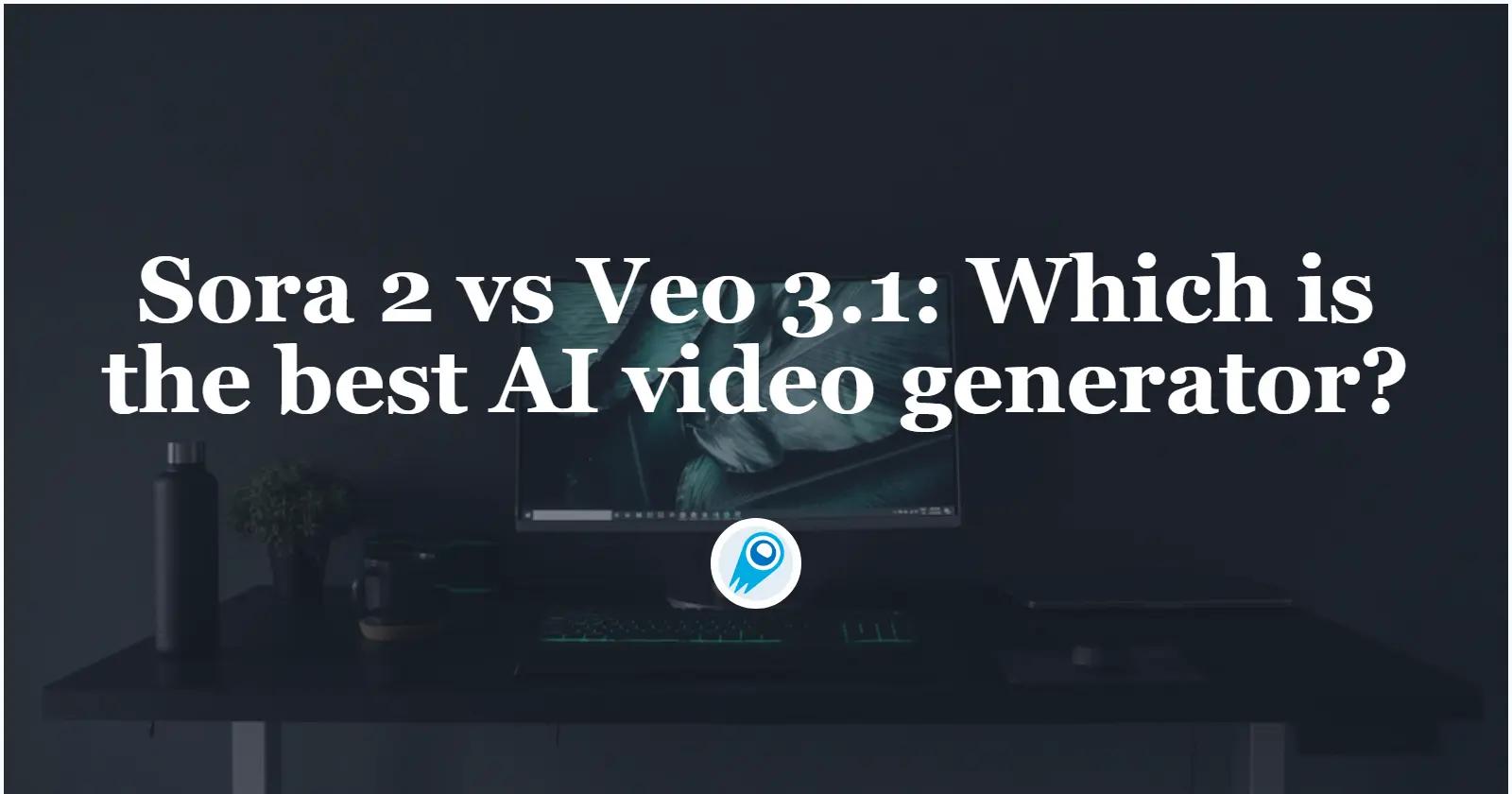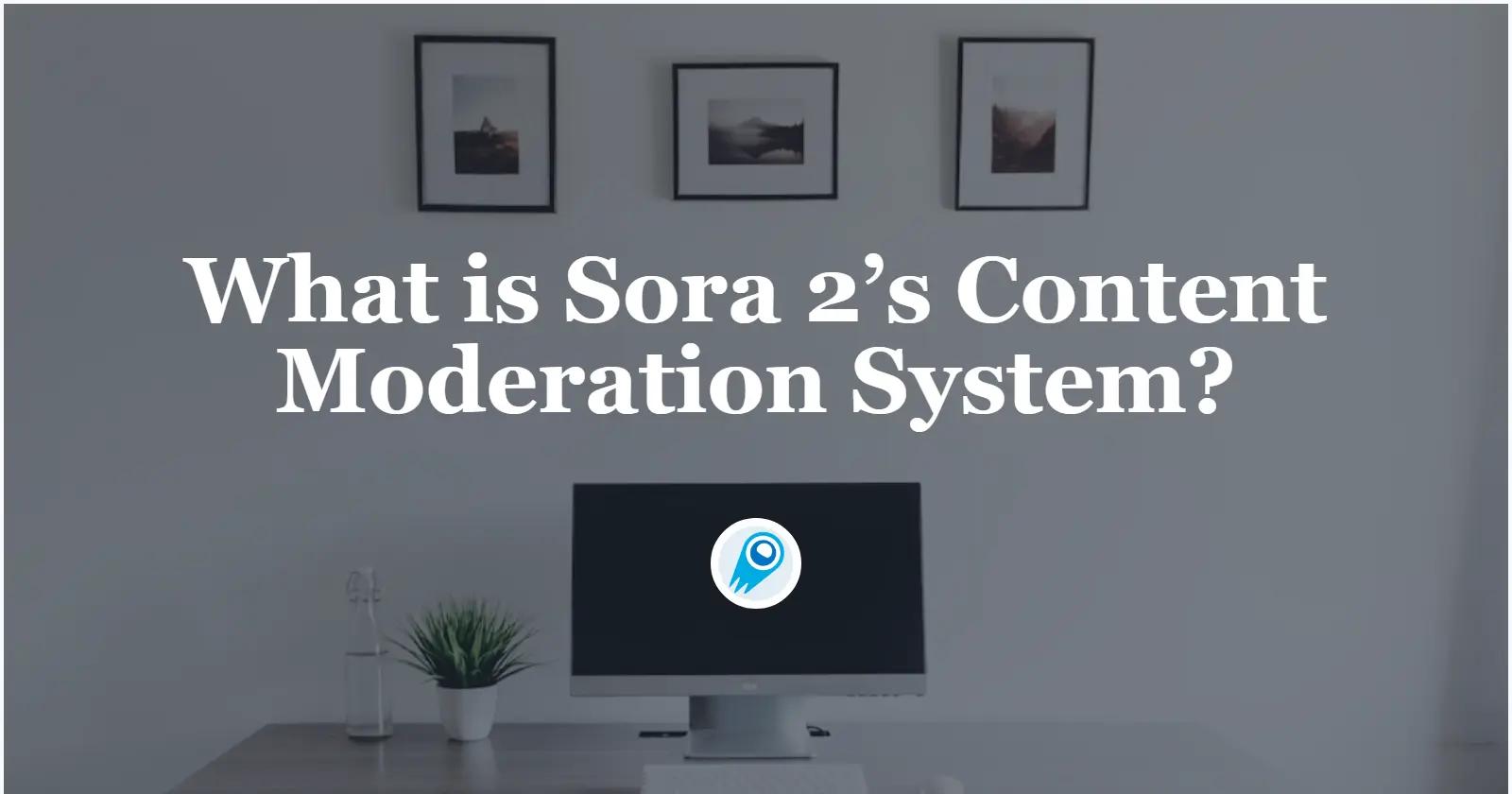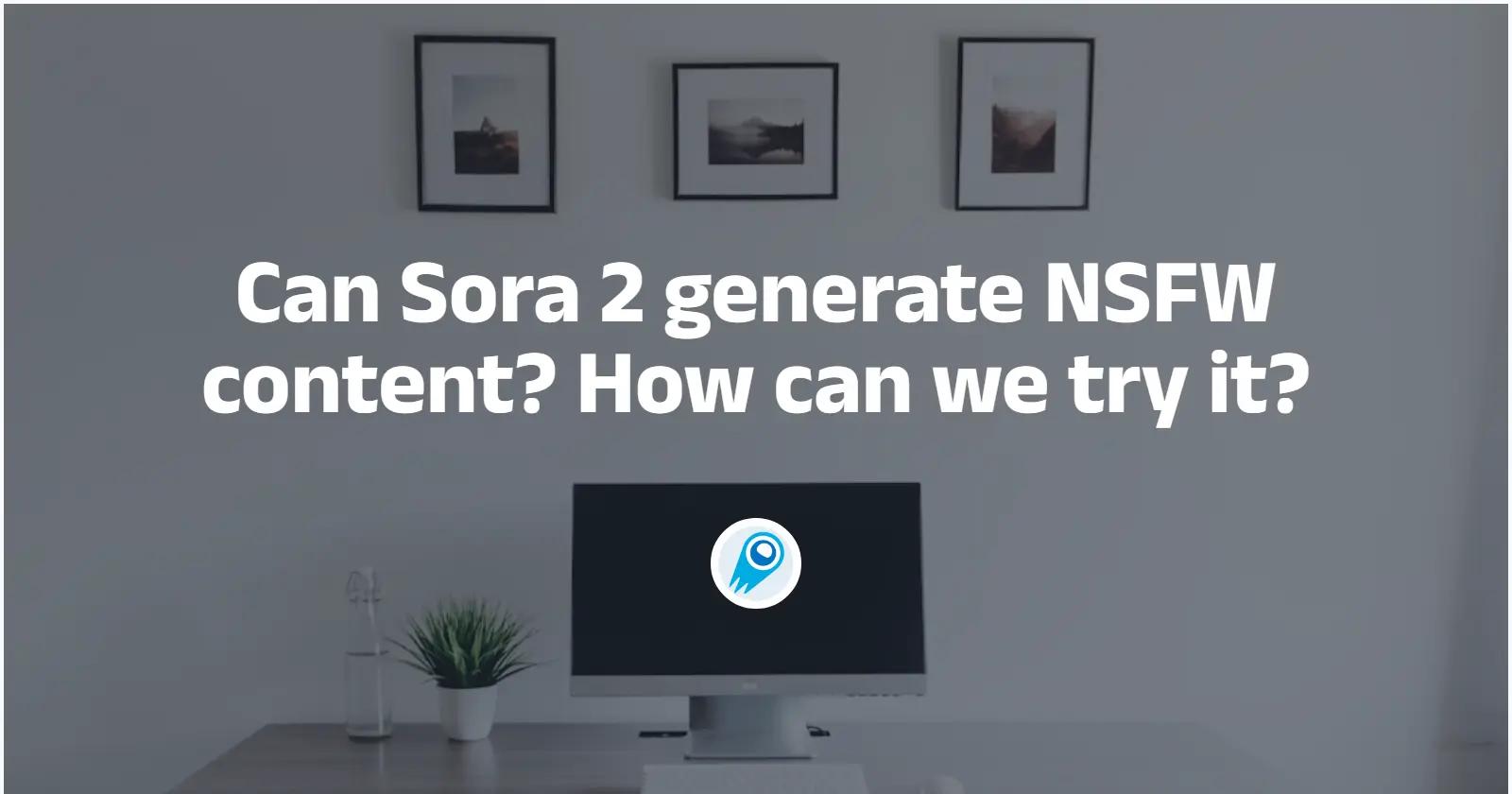Sora 2 (OpenAI) en Veo 3.1 (Google/DeepMind) zijn beide geavanceerde tekst-naar-videosystemen die eind 2025 zijn uitgebracht en die realisme, audiosynchronisatie en beheersbaarheid naar een hoger plan tillen. Sora 2 richt zich op cinematografisch realisme, natuurkundige accurate bewegingen en nauwkeurige audiosynchronisatie en wordt uitgerold achter app-/uitnodigingstoegang; Veo 3.1 richt zich op creatieve controle, compositie (beeld → video, workflows voor ingrediënten) en bredere API-previewtoegang via Gemini/Flow. Welke het beste is, hangt af van of je prioriteit geeft aan cinematografische getrouwheid en gesynchroniseerde audio (Sora 2) of aan beheersbaarheid, workflowtools en API-toegankelijkheid (Veo 3.1).
Wat is Sora 2?
Sora 2 is OpenAI's tweede grote model voor het genereren van openbare video en het belangrijkste model dat de nieuwe Sora-app aanstuurt. Gelanceerd als opvolger van OpenAI's originele Sora-systeem, legt Sora 2 de nadruk op fysiek realisme, gesynchroniseerde dialogen en geluidseffecten, en verbeterde bedieningsmogelijkheden ten opzichte van eerdere tekst-naar-videosystemen. OpenAI presenteert Sora 2 als een vlaggenschipmodel, bedoeld voor zowel creatieve contentgeneratie als het verkennen van multimodale generatiemogelijkheden.
De genoemde sterke punten van Sora 2 zijn onder meer:
- Korte, hoogwaardige clips met geloofwaardiger natuurkunde en beweging vergeleken met veel eerdere modellen.
- Gesynchroniseerde audio en spraak:Sora 2 wordt gepresenteerd als een game die dialogen en geluidseffecten produceert die aansluiten bij de actie op het scherm, in plaats van stille clips of losjes afgestemde audio.
- Multimodale inputs: accepteert tekst en visuele referenties (afbeeldingen) om het uiterlijk van het onderwerp en de compositie van de scène te bepalen.
Wat is Veo 3.1?
Veo 3.1 is Google's incrementele upgrade van zijn Veo-familie van videogeneratiemodellen (Veo 3 → Veo 3.1). De 3.1-release verlengt de videolengte, biedt rijkere native audio- en verhaalcontrole en bevat praktische bewerkingstools zoals scène-uitbreiding en objectverwijdering. De release is expliciet bedoeld om te streven naar betere prompt-adherentie, multi-shotcontinuïteit en bewerkingsworkflows.
Veo 3.1 brengt een aantal praktische verbeteringen met zich mee:
- Afbeelding → video:Veo 3.1 wordt expliciet aangeprezen als beter in staat om statische afbeeldingen om te zetten in samenhangende korte clips, waarbij texturen en visuele identiteit behouden blijven.
- Geïntegreerde audio- en verhaalbediening:het model kan soundtracks, omgevingsgeluiden en zelfs verhaalstructuren genereren die beter aansluiten bij de verwachtingen van cinematografie. Hierdoor wordt de spanning tussen een gegenereerde clip en een publiceerbaar resultaat kleiner.
- Hulpmiddelen voor bewerking in de scène: in combinatie met Flow ondersteunt Veo 3.1 bewerkingen zoals het verwijderen van een object uit een scène en het naadloos herstructureren van de achtergrond – een belangrijke stap richting praktische bewerking in plaats van alleen generatie. Veo 3.1 biedt gedetailleerdere bedieningselementen voor shotlijsten, camerabewegingen, belichtingssignalen en multi-shotcontinuïteit. Het model ondersteunt het aaneenrijgen van clips om langere verhalen te creëren door meerdere generaties aan elkaar te plakken.
Snelle momentopname van de mogelijkheden
| Bekwaamheid | Sora 2 (Open AI) | Veo 3.1 (Google) |
|---|---|---|
| Primaire focus | Cinematografisch realisme, natuurkundige bewegingen, gesynchroniseerde audio | Continuïteit met meerdere shots, narratieve bediening, rijkere audiotools |
| Maximale cliplengte (openbare previewrapporten) | ~15 seconden (de lengte van de app/demo varieert per toegang) | Tot ~60 seconden met scène-uitbreidingstools (preview) |
| Native audiosynchronisatie | Ja — dialoog, geluidseffecten, omgevingsgeluid | Ja — rijkere audio en ondersteuning voor ‘ingrediënten naar video’-audio |
| Multi-shot / continuïteitsgereedschappen | Handmatige stitching + stijlcontrole; hoge getrouwheid per opname | Ingebouwde multi-shot, ingrediënten, eerste/laatste frame-overgangen |
| Toegang tot kantoor / beschikbaarheid | Sora-app, ChatGPT Pro-functies, Azure Foundry (enterprise) | Betaalde preview via Gemini API, Flow, Veo Studio demo |
| Veiligheids-/herkomstkenmerken | Systeemkaart en mitigaties; doorlopende uitrol | Nadruk op experimentele functies en preview-bedieningselementen voor ontwikkelaars |
| Typisch use cases | Cinematografische single-shots, storytelling met fysiek realisme | Korte verhalen, consistente personages in alle shots, redactionele stromen |
| Bewerkingshulpmiddelen (object verwijderen, scène uitbreiden) | Bewerken en samenstellen is mogelijk via app-workflows; sterke focus op natuurkundig realisme. | Scène-uitbreiding, objectverwijdering en multi-prompt-/multi-shot-bediening beschikbaar in Flow/Gemini. |
| Snelle naleving en consistentie | Hoge realisme- en natuurkundige getrouwheid; gerapporteerd sterker realisme in enkele opnamen | Verbeterde, snelle naleving bij multi-shot- en continuïteitsscenario's; betere voorspelbaarheid bij het samenvoegen van shots. |
Veo 3.1 vs Sora 2: Kenmerken
Kerngeneratieve capaciteiten
- Sora 2: Legt de nadruk op fotorealisme, fysiek plausibele bewegingen en gesynchroniseerde audio (dialoog en geluidseffecten die worden gegenereerd om de gebeurtenissen op het scherm te evenaren). De boodschap van OpenAI benadrukt verbeterde stuurbaarheid en een uitgebreid stilistisch bereik voor cinematografische output. Dit maakt Sora 2 bijzonder geschikt wanneer je cinematografisch realisme in één shot wilt (close-ups, dynamische belichting, natuurlijke beweging).
- Veo 3.1: Focust op een toolkit met creatieve primitieven: verbeterde beeld-naar-video, "ingrediënten naar video" voor consistentie tussen shots, "frames naar video" voor vloeiende overgangen tussen begin- en eindframes, en "scène-uitbreiding" om clips te verlengen met coherente beelden en audio. Veo 3.1 biedt meer expliciete bedieningsmodi (structuur- versus stijlgebaseerde generatie) voor regisseurs die multi-shotsequenties willen maken met consistente elementen.
Audio en dialoog
- Sora 2: Geïntegreerde audiogeneratie is een koploper: dialogen die synchroon lopen met lipbewegingen, achtergrondgeluiden en geluidseffecten die perfect aansluiten op de actie op het scherm. OpenAI heeft synchronisatie herhaaldelijk genoemd als onderscheidend kenmerk. Dit geeft Sora 2 een productievoordeel bij korte filmscènes, waarbij stem en geluid nauw moeten aansluiten op de beelden.
- Veo 3.1: Verbetert ook de audio – Veo 3.1 voegt rijkere audio toe aan alle functies en integreert audiogeneratie in 'ingrediënten' en 'frames naar video', waardoor spraak/muziek/sfx over overgangen en uitgebreide scènes heen kunnen worden overgedragen. Google benadrukt de mogelijkheid tot verhaalbesturing en audio als onderdeel van de Flow-updates.
Beide systemen genereren nu gesynchroniseerde audio en spraak. Sora 2 biedt hifi-dialogen en omgevingsbewuste geluidseffecten; Veo 3.1 verbetert de audio in de multi-shot-tooling en voegt audio toe aan de 'ingrediënten'-functies. Uit zij-aan-zij tests blijkt dat de audio van Sora 2 de nadruk legt op de natuurlijke plaatsing van geluiden in de scène, terwijl de audiotools van Veo 3.1 prioriteit geven aan narratieve controle en consistente audiomotieven in alle shots. Kies Sora 2 als u de voorkeur geeft aan cinematografisch gesynchroniseerde dialogen in afzonderlijke scènes, en Veo 3.1 als u rijkere, programmatisch aangestuurde audio wilt via beeld-naar-video-pijplijnen.
Controleerbaarheid / prompt interfaces
- Soera 2: Benadrukt stuurbaarheid en stijlcontrole; veel demo's tonen gedetailleerde prompts en sjablonen op app-niveau die belichting, camerabewegingen en physics-signalen afstemmen. OpenAI publiceerde ook een systeemkaart met een beschrijving van mitigatie- en stuurstrategieën.
- Beeld 3.1: Veo 3.1 + Flow** promoot expliciet in-scene editing (objecten verwijderen/invoegen, achtergronden herstructureren) en krachtigere multi-shot bridging tools, voegt gestructureerde promptmodi toe (stijl- versus structuurgebaseerde workflows), multi-prompt tijdlijnen en parameters die beschikbaar zijn via de Gemini API en Veo Studio. Dit is bedoeld om bewerkingsworkflows te stroomlijnen en multi-shot sequencing te vereenvoudigen voor makers en ontwikkelaars.
Conclusie: Veo 3.1 heeft momenteel de voorsprong op het gebied van ingebouwde bewerkingsmogelijkheden en workflows waarbij je 'wat je ziet, kun je chirurgisch veranderen'; Sora 2 is uitstekend voor het snel genereren van creatieve content, maar vereist vaak nabewerking voor nauwkeurige bewerkingen.
Continuïteit, multi-shot controle en bewerkingshulpmiddelen
De opvallendste kenmerken van Veo 3.1 zijn de tools voor coherente multi-shots: multi-prompting voor multi-shot video's, tools om scènes tot ongeveer een minuut te verlengen en objectverwijdering die de scène herschrijft rond gewiste items. Deze zijn expliciet gericht op efficiënte bewerkingsworkflows.
Het antwoord van Sora 2 is een sterkere getrouwheid per clip en geïntegreerde audio, maar veel praktische Sora-gebruiksscenario's vereisen het aan elkaar plakken van meerdere Sora-clips tot langere scènes. Deze stap verbetert het ecosysteem, maar is nog steeds een andere workflow dan de ingebouwde continuïteitsfuncties van Veo.
Veo 3.1 versus Sora 2: prestaties
Opmerking: "Prestaties" omvat hier getrouwheid (visueel/audiorealisme), snelheid en consistentie. Benchmarks in openbare tests zijn voorlopig en afhankelijk van prompt, budget (rekenniveau) en nabewerking.
Visuele getrouwheid en realisme
- Soera 2: Soera 2 benadrukken een hoger realisme en superieure fysica in beweging — stof, botsingen en interacties met objecten zien er in veel single-shot-tests natuurlijker uit. Onafhankelijke reviews melden dat Sora 2 bijzonder sterk is in fotografisch realisme.
- Beeld 3.1: Sterk in helderheid, scherpe details en consistente rendering over frames heen. Veo 3.1 produceert scherpe, zeer gedetailleerde frames en behoudt een consistente visuele stijl bij het gebruik van workflows op basis van ingrediënten, wat soms voorspelbaardere resultaten oplevert bij het overbruggen van shots.
Belangrijkste punt: Sora 2 wordt over het algemeen geprezen om de natuurlijke bewegingen en physics in korte scènes, terwijl Veo 3.1 uitblinkt als je beeld-naar-video-nauwkeurigheid en behoud van texturen nodig hebt.
Snelheid en doorvoer
Sora 2 kan snel zijn voor korte, enkele shots (bijv. een totale verwerkingstijd van minder dan 1 minuut voor korte clips in geoptimaliseerde app-flows), terwijl Veo 3.1 mogelijk een langere looptijd heeft voor het genereren van meerdere shots, maar de nabewerkingstijd verkort dankzij ingebouwde continuïteitstools. De snelheid is sterk afhankelijk van het toegangstype (app versus API versus enterprise) en de rekenopties. Benchmarks variëren afhankelijk van de complexiteit van de scène, maar beide systemen produceren nu bruikbare outputs van 8-60 seconden in tijdschalen die geschikt zijn voor iteratief creatief werk in plaats van batch-runs van de ene op de andere dag.
Robuustheid en snelle naleving
Bij langere scènes met meerdere scènes bieden de multi-shotbediening en scène-uitbreidingstools van Veo 3.1 momenteel consistenter identiteitsbehoud en belichtingscontinuïteit. Sora 2 blinkt uit in realisme met één shot, met bijzonder goede physics-simulatie en audiosynchronisatie. Verschillende recensenten die beide hebben getest, gaven aan dat Veo gemakkelijker consistente personage-gedreven sequenties produceert, terwijl Sora 2 op zichzelf staande momenten met een hogere getrouwheid produceert. Als je project een reeks scènes omvat die de look en het gedrag van een personage over de shots heen moeten behouden, heeft Veo 3.1 momenteel de overhand op het gebied van workflowfuncties voor dat probleem.
Veo 3.1 vs Sora 2: Prijzen en toegang
Hoe ze vandaag de dag beschikbaar zijn
- Veo 3.1: uitgebracht in een betaalde preview via de Gemini API, toegankelijk via Google AI Studio, Vertex AI en de Gemini-app. Sommige externe diensten brachten Veo 3.1-toegang kort na de lancering beschikbaar; Google bracht richtlijnen voor ontwikkelaars en promptdocumentatie uit.
- Sora 2: OpenAI heeft Sora 2 uitgebracht via de Sora-app en heeft aangekondigd dat de premiumversie beschikbaar is voor ChatGPT Pro-gebruikers en andere productkanalen. De beschikbaarheid wordt gefaseerd uitgerold.
API-prijs
Sora 2 (OpenAI-platformprijzen):
sora-2(720×1280 / 1280×720): $0.10 / seconde.sora-2-pro(zelfde basisresolutie): $0.30 / seconde.sora-2-prohogere resolutie (1792×1024 / 1024×1792): $0.50 / seconde.
Veo 3.1 (Gemini API-prijzen):
- Veo 3.1 Standaard (video + audio): $0.40 / seconde.
- Ik zie 3.1 Snel (lagere latentie / lagere kosten): $0.15 / seconde (Google kondigde prijsverlagingen en de Fast Lane aan, met name om kosten te verlagen).
CometAPI is een uniform API-platform dat meer dan 500 AI-modellen van toonaangevende aanbieders – zoals de GPT-serie van OpenAI, Gemini van Google, Claude, Midjourney en Suno van Anthropic – samenvoegt in één, gebruiksvriendelijke interface voor ontwikkelaars. Door consistente authenticatie, aanvraagopmaak en responsverwerking te bieden, vereenvoudigt CometAPI de integratie van AI-mogelijkheden in uw applicaties aanzienlijk. Of u nu chatbots, beeldgenerators, muziekcomponisten of datagestuurde analysepipelines bouwt, met CometAPI kunt u sneller itereren, kosten beheersen en leveranciersonafhankelijk blijven – en tegelijkertijd profiteren van de nieuwste doorbraken in het AI-ecosysteem.
Ontwikkelaars hebben toegang tot Sora 2 API(sora-2-hd; sora-2) en Veo 3.1-API(veo3.1; veo3.1-pro) via CometAPI, de nieuwste modelversie wordt altijd bijgewerkt met de officiële website. Om te beginnen, verken de mogelijkheden van het model in de Speeltuin en raadpleeg de API-gids voor gedetailleerde instructies. Zorg ervoor dat u bent ingelogd op CometAPI en de API-sleutel hebt verkregen voordat u toegang krijgt. KomeetAPI bieden een prijs die veel lager is dan de officiële prijs om u te helpen integreren.
Sora 2: $0.16000
Veo3.1:
| veo3.1-pro | $2 |
| veo3.1 | $0.1 |
Voorbeeldworkflows (praktisch)
Regisseur van korte films (2–3 shots, close-ups van personages)
- prototype binnen Soera 2 om het cinematografische effect van één opname en de audiosynchronisatie te vergrendelen.
- Exporteer frames en geluid. Als u consistente herhalingen in verschillende shots nodig hebt, kunt u Sora-uitvoer gebruiken als stijlreferenties. (Als continuïteit lastig wordt, kunt u overwegen om het opnieuw te doen met een Veo + referentieafbeeldingen-flow.)
Marketingstudio (10+ varianten, hetzelfde karakter in alle varianten)
- Gebruik Beeld 3.1 met afbeeldingen van ‘ingrediënten’ voor een consistente karakterstijl.
- Gebruik Veo 3.1 Fast voor iteratieve renders en stitch in Flow voor het bewerken van de tijdlijn en het uitbreiden van scènes.
Sociale maker (korte virale clips, spraaksynchronisatie)
Gebruik Sora 2-app Presets, kies muziek-/stemsjablonen en genereer snel korte clips. Verdien geld via platformuploads; beheer gelijkenissen en rechten als er echte mensen bij betrokken zijn.
Conclusie
Zowel Sora 2 als Veo 3.1 vertegenwoordigen een snelle ontwikkeling van generatieve video. Sora 2 pusht realisme en geïntegreerde audio, waardoor het een go-to is voor single-shot cinematografisch werk en toepassingen die levensechter fysiek gedrag willen. Veo 3.1 biedt praktische bewerkingsmogelijkheden, multi-shot continuïteit en verbeterde prompt-adherentie – functies die handmatige nabewerking verminderen bij het maken van langere verhalen. De juiste keuze hangt af van of u waarde hecht aan single-clip getrouwheid or efficiëntie van de multi-shot workflowen in welk cloud-/app-ecosysteem u zich al bevindt.
Klaar om video te genereren? Raadpleeg de API-gids voor gedetailleerde instructies.
Als u meer tips, handleidingen en nieuws over AI wilt weten, volg ons dan op VK, X en Discord!



